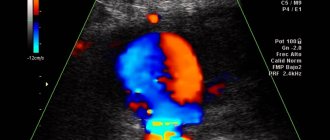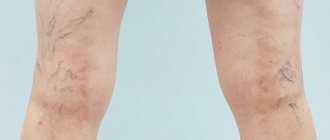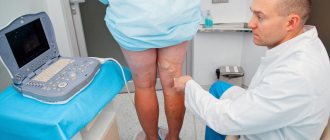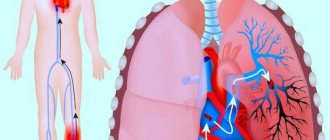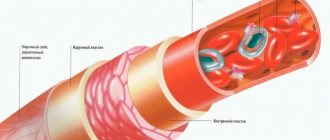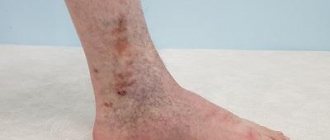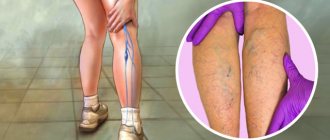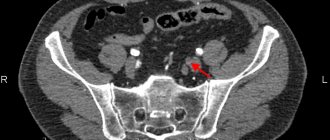Even minor disturbances in blood circulation in the vessels of the lower extremities can cause a malfunction of all organs. At best, this situation will lead to decreased ability to work, and at worst, complications that develop can lead to disability or death. In order to help the patient avoid serious consequences, the doctor draws up a treatment regimen, which includes several groups that represent vasodilators for the lower extremities. Only a specialist can select effective medications.
Angioprotectors
Angioprotectors have vasodilating properties. They can improve blood circulation, reduce wall permeability and viscosity. As a result, clots are not deposited on the inner lining of the wall.
A fairly popular drug is Trental. It is based on the substance pentoxifylline. Trental helps reduce tone, dilate the arteries of the lower extremities, and also improve blood composition. It is produced in tablets, in the form of a solution for intravenous or intramuscular injection. Trental can be used to treat vascular diseases of the legs in diabetes mellitus. The dosage and duration of taking the medicine are prescribed by the doctor individually.
Another effective drug is Curantil. This is a vasodilator based on the substance dipyridamole. Chime helps achieve the following goals:
- Normalization of microcirculation.
- Interfering with the process of platelet adhesion, which, in turn, leads to a reduction in the risk of blood clots.
- It is effective in the treatment and prevention of thrombosis, thromboembolism, and general circulatory disorders not only of the lower extremities, but also of the arms.
The maximum daily dose of medication for an adult is 600 mg.
Folk remedies
In case of impaired blood circulation in the legs, traditional medicine can provide good help.
All of them are completely safe, accessible and healthy.
Here are some of the most popular proven recipes:
- Place fresh or dried nettles in a bowl, filling 1/3 of the volume. Top up with boiling water. Wait until it cools down to the point where you can put your feet in it. Keep them in the infusion for about 10 minutes. Repeat the procedure after 2 – 3 days.
- Take 300 g of prunes and hazelnuts, half a kilo of raisins and 600 g of walnuts. Pass all this through a meat grinder, add two tablespoons of honey and mix. You need to take the medicine daily, a tablespoon half an hour before each meal (3 times).
- An excellent remedy for poor blood circulation is an infusion of horse chestnut flowers. For a half-liter bottle of vodka, take 50 g of dried flowers and leave in a warm place for two weeks in a dark place. Be sure to shake every day. Take the infusion 30 drops, diluted in a quarter glass of warm water, three times a day before meals (half an hour). Treatment is carried out in courses of 10 days followed by a 5-day break.
- Steaming your feet in a bath with the addition of spruce needles and salt gives a quick effect. You need to add two tablespoons of raw materials per liter of water. And baths with linden blossom will relieve swelling.
The listed methods will help prevent circulatory disorders and improve it. But be sure to see a doctor, as self-medication can lead to undesirable consequences.
Myotropic antispasmodics
Myotropic antispasmodics help relieve spasms, dilate blood vessels, and increase blood flow. But at the same time, they act only on healthy veins and arteries, without affecting damaged ones, which is a serious disadvantage. Common representatives of this group are Halidor and Papaverine.
Halidor not only relieves spasms, but also helps with diseases of peripheral arteries. In addition, the medicine has anesthetic and tranquilizing properties. The difference between the drug and its analogues is that it does not have a negative effect on the general condition of the body due to complete absorption into the gastrointestinal tract. Halidor is produced both in the form of an injection solution and in tablets. The maximum daily dose is 400 mg.
Adverse reactions
When the medicine is used correctly, adverse reactions of the body are rarely observed. As a rule, negative reactions occur when contraindications are violated, an overdose or non-compliance with the infusion rate.
The most common side effects occur from the nervous system. They may manifest as headaches. Negative reactions are also often associated with insomnia and internal anxiety.
Sometimes swelling and redness of the skin of the face may appear. In severe cases, an overdose develops tachycardia or arrhythmia, as well as other disruptions in the functioning of the cardiovascular system. Severe allergic reactions and signs of gastrointestinal bleeding may occur.
If dangerous symptoms appear and the general condition worsens, you should stop taking the drug. Treatment is symptomatic. If the patient’s condition cannot be stabilized, an ambulance should be called.
Thrombolytics and anticoagulants
These groups of drugs are used during exacerbations of diseases of the lower extremities. In the chronic form of the disease, they are practically powerless. Anticoagulants are medications that can thin the blood and also prevent the formation of clots on the walls of blood vessels.
The most famous representative of the anticoagulant group is Heparin. It is used for treatment and prevention:
- Thrombosis of deep and superficial veins of the lower extremities.
- Thromboembolism.
- Peripheral arterial embolism.
Heparin reduces platelet aggregation, improves blood circulation and affects clotting. The product also helps lower cholesterol. It is produced in the form of a gel and solution for intravenous use. Remember that Heparin therapy should be carried out with caution and under constant medical supervision, since taking it can cause bleeding.
Unlike anticoagulants, thrombolytic drugs do not prevent the formation of blood clots in the lower extremities, but destroy existing ones. This group of drugs is often used for emergency treatment of thrombosis.
Urokinase is a thrombolytic drug. It is used for severe pulmonary embolism, peripheral vascular obstruction and acute deep vein thrombosis of the lower extremities. Urokinase has the ability to dissolve clots and increase the lumen. The medicine is released only in the form of a solution for droppers. In order to reduce the risk of recurrent blood clots, after taking Urokinase it is necessary to undergo a course of treatment with anticoagulant drugs.
Drugs of the thrombolytic and anticoagulant groups are used during exacerbations of diseases of the lower extremities.
What is offered to patients at stage 3 of coxarthrosis?
Traditionally, in advanced forms of coxarthrosis, patients are recommended to undergo hip replacement. This is a radical way to relieve a person from pain - expensive, lengthy, and requiring long rehabilitation. One of the surgical options is arthrodesis. The articular bones are fixed with metal staples to completely immobilize the supporting anatomical structure.
After total endoprosthetics, the patient undergoes long-term rehabilitation. During this period, it is very important to follow all recommendations, otherwise there will be a need for repeated intervention. If prosthetics are contraindicated, surgeons may recommend osteotomy - temporary fusion in the desired position of artificially broken hip bones. However, there are other, more gentle options.
Even at stage 3 of coxarthrosis, it makes sense to take a course of Noltrex intra-articular injections, which will help avoid complex surgery. The drug is injected into the joint, it expands the rubbing surfaces and restores the viscosity of the joint fluid. The hip joint is again able to absorb the load, so the pain during movement goes away. After 12-18 months, the course is repeated.
Noltrex is a good alternative to joint surgery in old age
Alpha blockers and calcium antagonists
Calcium antagonists and alpha-blockers are part of the same group of drugs called vasodilators. They help dilate blood vessels and normalize blood circulation, but the effectiveness of one or another remedy directly depends on the type and degree of the disease.
Calcium antagonists are vasodilators that thin the blood and activate the blood circulation process at the cellular level. Their action is aimed at reducing the amount of calcium entering cells from the blood. A fairly well-known representative of this group is Nifedipine. It helps normalize the blood circulation process. Nifedipine is used to treat vascular diseases of the arms and legs. The maximum daily dosage is 60 mg.
Alpha blockers block adrenergic receptors located on the walls of blood vessels in the lower extremities. If this does not happen, then adrenaline, when bound to such receptors, can provoke a sharp narrowing of the lumens of blood vessels.
The drug Nicergoline is used to treat peripheral vessels of the lower extremities. Thanks to its properties, it helps to increase blood flow speed, reduces the level of platelet aggregation and vascular tone. In pharmacies, the medicine is sold in the form of a powder for preparing a solution and in tablets. The doctor prescribes the dosage for each patient individually. Nicergoline, when taken simultaneously with anticoagulants, enhances their effect.
Another effective drug in this group is Phentolamine. The medicine has vasodilating and antispasmodic properties. It is used for disorders of the circulatory system and trophic ulcers of the lower extremities, as well as for frostbite and non-healing wounds of both legs and arms. The medicine can be prescribed to the patient in tablets or injection solutions.
The drug is used in the treatment of peripheral vessels of the lower extremities.
Dosage
The dose and method of administration are determined by the doctor after examining the patient. In this case, the severity of the circulatory disorder against the background of a specific disease and the person’s condition must be taken into account. Treatment must be carried out under strict control of blood pressure.
According to the instructions attached to the drug, oral administration is permitted in accordance with the following recommendations:
- Treatment intake: 3 tablets (100 mg) three times a day.
- Possible increase in dosage to 6 (100 mg) tablets three times a day.
- The maximum single dose is no more than 2 (100 mg) tablets.
Tablets are usually indicated for maintenance therapy. They are taken after meals. They must be swallowed with plenty of clean water. If there are pathologies of the kidneys and liver, then the dosage is reduced by 2 times. There are also other recommendations in the instructions that need to be studied.
The infusion solution is prepared from 100 - 600 mg of medication. It is diluted in 0.9% sodium chloride solution (250 - 500 ml). Droppers are placed 1-2 times a day. It is imperative to test for compatibility when using other infusion solutions.
Biogenic stimulants
Biogenic stimulants are a large group of drugs of plant or animal origin. They can only be prescribed as additional treatment. To combat vascular diseases of the lower extremities, two drugs are most often used: Solcoseryl and Actovegin.
Solcoseryl is a drug that accelerates and restores the metabolic process in the tissues of the lower extremities. The basis of the medicine is an extract from calf blood. During treatment, Solcoseryl restores and dilates damaged blood vessels, and also improves blood circulation. The dosage of the medicine may vary depending on the type of disease and the degree of its development. For example, Solcoseryl in the form of an ointment is excellent for treating trophic ulcers of the lower extremities, and in the form of an injection solution it is prescribed for chronic venous insufficiency.
Antiplatelet agents
Such drugs reduce blood viscosity and prevent the formation of blood clots in the lower extremities. The action is similar to anticoagulants, but unlike them, antiplatelet agents act directly on platelets, and not on proteins.
The most famous representative of antiplatelet drugs is Aspirin. In small doses it acts as a thinning agent, and in large doses it helps stop the inflammatory process. To obtain a pronounced effect, it is necessary to take Aspirin for a sufficiently long time. The duration of treatment can only be determined by a doctor.
Contacting a specialist regarding the use of any medications, including vasodilators, is a prerequisite for successful treatment. Self-medication can only weaken health already undermined by the disease.
Contraindications
An absolute contraindication is intolerance to the active substance and other components in the medication. The drug is not prescribed for people under the age of 18, as well as during pregnancy and lactation. Other contraindications for Trental 100, the instructions for use focus on:
- Severe bleeding of any etiology.
- Hemorrhages in the brain and retina.
- Myocardial infarction.
With extreme caution and only after assessing the patient’s condition, the drug is prescribed for the following pathologies:
- Cardiac arrhythmia.
- Low blood pressure.
- Chronic heart failure.
- Stomach and duodenal ulcers.
- Kidney failure.
- Liver pathologies.
Do not use the medicine after surgery, or if you are prone to bleeding.
